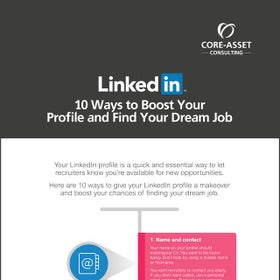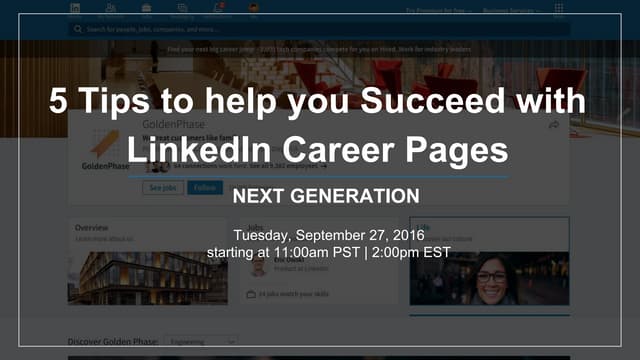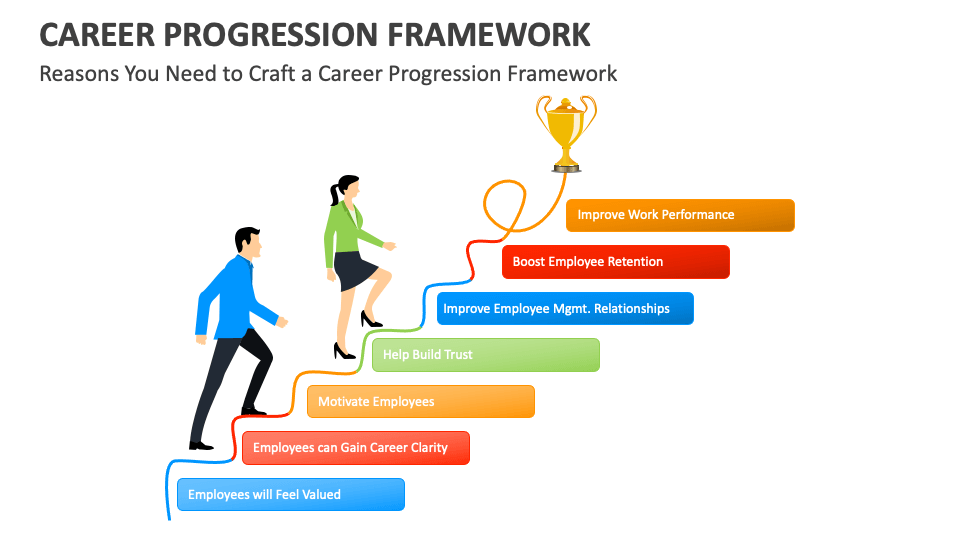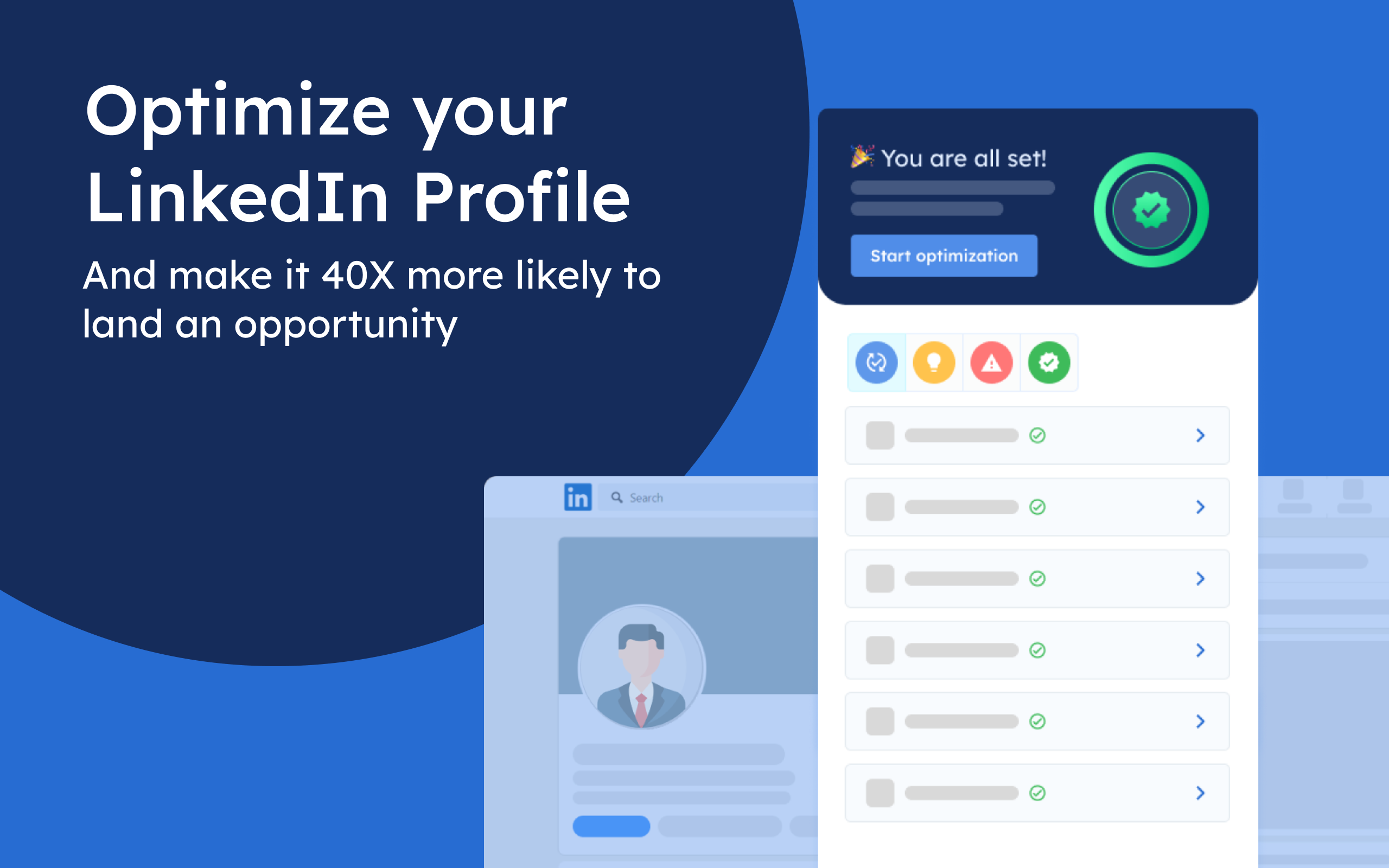In today’s digital age, LinkedIn has become the go-to platform for professionals looking to connect, network, and showcase their career journeys. One of the most powerful features of LinkedIn is the ability to link jobs together, allowing you to present a coherent narrative of your career progression. This simple yet effective tool not only highlights your skills but also demonstrates your growth and adaptability in your field. So, how do you make the most of job linking on
Understanding the Importance of Showcasing Career Progression

Showcasing your career progression on LinkedIn is more than just listing past jobs; it's about telling your story. Here’s why this matters:
- Employers are Looking for Growth: Recruiters and hiring managers love to see candidates who have evolved in their roles. By linking your jobs, you show a clear trajectory of responsibility and skill enhancement.
- Highlighting Skills and Achievements: Each position can highlight different skills and achievements. When you link jobs, you can use this to illustrate how you’ve built upon your skill set over time.
- Building a Professional Brand: Your LinkedIn profile is your digital business card. A well-structured job history helps you maintain a professional image, reinforcing your commitment to growth and professionalism.
Let’s take a closer look at some key reasons why effectively displaying your career progression is crucial:
1. Establishing Credibility
When you present a cohesive career path, you build credibility. Connecting jobs shows that you didn’t just hop from one role to another aimlessly. Instead, you’re communicating a sense of purpose in your career. Employers tend to favor candidates who have a clear understanding of their career goals and the steps they’ve taken to achieve them.
2. Demonstrating Adaptability
The way job markets evolve today, adaptability is a prized trait. Linking your jobs can showcase how you’ve faced different challenges and adapted to new environments or roles. It lets potential employers visualize how you might fit into their organization and adjust to changes that come your way.
3. Making a Lasting Impression
When first impressions matter, a well-linked job history can make you stand out in the crowded job market. A seamless representation of your career journey—complete with details about achievements or promotions—creates an engaging narrative that keeps recruiters interested.
4. Explaining Job Transitions
Job transitions can sometimes raise questions for potential employers. Linking jobs helps clarify your decisions. Whether you moved for a promotion, sought new challenges, or pivoted into a different industry, connecting the dots gives context to your moves, alleviating any doubts about your career choices.
In conclusion, effectively showcasing your career progression through job linking on LinkedIn is an invaluable strategy. It’s more than just a feature; it’s a way to tell your professional story. Make it engaging, clear, and comprehensive—and you’ll be well on your way to creating a powerful LinkedIn presence. So, take some time to review your
Also Read This: How to Change Email Address for LinkedIn: Updating Your Contact Information on LinkedIn
3. Step-by-Step Guide to Linking Jobs on LinkedIn

Linking jobs on LinkedIn is a fantastic way to visually showcase your career progression. It allows potential employers, clients, and connections to see how you've evolved over time. Ready to get started? Follow this straightforward step-by-step guide:
- Log Into Your LinkedIn Account: Make sure you're logged into your LinkedIn account. If you don’t have one yet, creating an account is easy and free!
- Navigate to Your Profile: Click on your profile picture or the "Me" icon at the top of your homepage, and select "View Profile." This will take you directly to your profile page.
- Add a New Position: Scroll down to the “Experience” section. Here, you'll find a "+" icon or an "Add Profile Section" button. Click it and select "Add position." This is where you’ll want to link your new job.
- Fill Out Job Details: Enter your job title, company name, location, and the dates you worked there. Be sure to check the box that says "I currently work here" if applicable. This step is crucial as it connects your new position with existing roles.
- Link to Previous Roles (if applicable): If you're linking this new job to previous roles, you can do so by mentioning earlier positions in the description. LinkedIn allows you to reference past jobs, so if your new position builds on your previous experiences, be sure to highlight that!
- Save and Preview: Once you’ve filled everything out, click “Save.” Now take a moment to preview your profile. Look at how your new role integrates with your existing job history. It's like putting together a puzzle!
- Refresh Your Connections: After your new job is added, make a post to announce your transition or career growth. Your network loves hearing about your successes!
And there you have it! Linking jobs on LinkedIn isn't just about filling in fields; it’s about creating a story that reflects your professional journey. Make sure to revisit your profile periodically so it stays current and engaging!
Also Read This: How to Send a Message to a Recruiter on LinkedIn: Tips for Professional Communication
4. Tips for Crafting Descriptions that Highlight Career Growth

Your job descriptions on LinkedIn are crucial for painting a vivid picture of your career progression. They’re not just about listing duties; they're about telling your professional story! Here are some practical tips to help you craft descriptions that truly showcase your growth:
- Focus on Achievements: Instead of listing responsibilities, highlight what you accomplished in each role. Use strong action verbs like "developed," "led," or "increased" to start your sentences. For example, “Increased sales by 30% through strategic marketing initiatives” sounds much more compelling than simply stating, “Responsible for sales.”
- Quantify Your Impact: Whenever possible, use numbers to demonstrate your success. This can be percentages, revenue figures, or project sizes. Numbers add credibility and demonstrate the tangible results of your efforts.
- Show Progression: Make sure to indicate how each position led you to the next stage in your career. For instance, if moving from a junior to senior role, explain how you gained skills and experience that prepared you for that advancement.
- Mention Skills and Tools: Discuss specific skills, tools, or methodologies you utilized. This not only highlights your competency but also makes your profile searchable for recruiters looking for particular expertise.
- Be Authentic: Write in a conversational but professional tone. Let your passion for your work shine through. Authenticity can make your profile stand out in a sea of generic descriptions.
- Tailor for Your Audience: Consider who will read your profile. If you’re in a creative field, you might take a more casual tone. For more traditional sectors, keep it professional. Just ensure that your personality comes through!
With well-crafted descriptions, you'll effectively communicate your career growth and unique value to potential employers and connections. Remember, it's not just about where you've worked; it's about how you've grown and what you can bring to the table in your next opportunity!
Also Read This: How to Add Volunteer Experience on LinkedIn to Boost Your Profile
5. Utilizing Visuals and Media to Enhance Your Profile

When it comes to making your LinkedIn profile stand out, *visuals play a crucial role. After all, a picture is worth a thousand words, right? Using high-quality visuals and media can significantly enhance the way your skills and experiences are presented. Here’s how you can effectively utilize visuals on your LinkedIn profile:
- Profile Photo: First impressions matter! A professional profile photo can increase profile views and connection requests. Choose a clear, recent photo where you are dressed professionally and looking approachable.
- Background Image: Your background image offers an opportunity to showcase your personal brand. Consider using an image that reflects your industry, your interests, or even a favorite quote that resonates with you.
- Media Attachments for Job Experiences: When linking your jobs, don’t just stop at text. Use the media section of each job entry to add presentations, videos, or documents that showcase your work. This could include project reports, publications, or links to projects you’ve contributed to.
- Showcase Your Skills: If you’ve completed courses or certifications, include certificates or badges as media attachments. Visual proof of your skills not only validates your claims but can also be appealing to recruiters looking for tangible evidence of your qualifications.
- Engage with Video: Videos are a dynamic way to express yourself. Whether it's a brief introduction about your professional journey or a summary of a project, video can captivate your audience. Just ensure the quality is good and the content is relevant!
Incorporating these elements will not only make your profile visually appealing but also provide a comprehensive overview of your career journey. Remember, visual storytelling* can be incredibly powerful – it helps potential employers and connections see beyond your job titles and dates, allowing them to grasp the essence of your career trajectory.
Also Read This: How Many Characters Can a LinkedIn Post Have? Content Limitations Explained
6. Common Mistakes to Avoid When Linking Jobs
While linking jobs on LinkedIn is a great way to showcase your career progression, a few common pitfalls can undermine your efforts. Here are some mistakes you should steer clear of:
- Poor Job Descriptions: Vague or overly complex descriptions can confuse readers. Instead, try to be concise yet descriptive. Focus on what you accomplished in each role. Use bullet points to break down your responsibilities and achievements clearly.
- Neglecting to Update: Keeping your LinkedIn profile current is vital. If you’ve changed jobs, acquired new skills, or completed significant projects, make sure to update your profile immediately. An outdated profile can deter potential employers.
- Inconsistent Job Titles: If your job titles have changed but you want to maintain consistency across your profile, be transparent with your labels. For instance, if you had a title change but the core job duties were the same, you can include both titles in your job listing.
- Ignoring Recommendations: Recommendations from colleagues or supervisors can provide social proof of your abilities. If you skip this step, you miss a chance to enhance your credibility. Ask for feedback after completing projects or transitioning jobs.
- Not Linking to Companies: Always link to the company page when setting up your job experience. This not only verifies your employment but also allows your connections to see the company’s profile and better understand your work environment.
Avoiding these common errors will help you create a more polished and professional LinkedIn profile, ensuring it reflects your career journey in the best light possible. Remember, your LinkedIn profile is often the first impression potential recruiters and connections will have of you, so make it count!
Also Read This: Decoding 1st and 2nd Connections on LinkedIn: How They Impact Networking
7. FAQs about LinkedIn Job Linking
When it comes to linking jobs on LinkedIn to display your career progression, it’s natural to have questions. Here are some frequently asked questions that might help clarify your doubts:
What does "linking jobs" mean on LinkedIn?
Linking jobs simply refers to the practice of associating your past job experiences with your LinkedIn profile. This allows you to showcase your career journey effectively, demonstrating how each role contributed to your skills and experience.
Why should I link my jobs on LinkedIn?
Linking your jobs enhances visibility on your profile, providing context to your career history. It tells potential employers a story about your professional development, highlighting promotions, skill acquisitions, and major projects you've completed.
How do I link jobs on LinkedIn?
Linking jobs is quite easy on LinkedIn:
- Navigate to your profile.
- Click on the "Add profile section" button.
- Choose "Work experience."
- Fill in the necessary details such as job title, company name, and dates.
- Save your changes!
Can I link the same job multiple times?
While you can certainly highlight different roles within the same company by creating separate entries for each position, avoid listing the same job multiple times unless it’s necessary to showcase significant changes in responsibilities or a new job title.
Does linking jobs on LinkedIn affect my search visibility?
Absolutely! A well-linked job history can improve your profile’s searchability. Recruiters often filter candidates based on specific skills and experiences. By detailing each role clearly and accurately, you increase your chances of being discovered by the right employers.
What if I had gaps in my employment?
Don’t worry! LinkedIn allows you to explain employment gaps in a positive light. You can include freelance work, volunteering, or even courses undertaken during that time. This shows that you continued to develop your skills, even when not formally employed.
In summary, linking jobs on LinkedIn is an essential step in building a compelling professional narrative. Being transparent about your career progression can greatly enhance your chances of attracting the right opportunities.
8. Conclusion: The Impact of a Well-Structured LinkedIn Profile
Your LinkedIn profile is more than just an online resume; it's a dynamic showcase of your professional journey. A well-structured LinkedIn profile that effectively links your jobs can have a profound impact on your career.
When your job history is clearly presented, it allows recruiters to grasp not only your qualifications but also the evolution of your career. This can lead to several benefits:
- Increased Visibility: A well-structured profile improves your chances of appearing in search results when recruiters are looking for candidates with specific skills or experiences.
- Better Networking: Clearly outlined job roles encourage current or former colleagues to connect with you on LinkedIn, enhancing your professional network.
- Stronger First Impressions: The first impression of your profile can make a significant difference; a polished and organized layout shows that you take your career seriously.
- Enhanced Confidence: Knowing that your profile accurately reflects your accomplishments can boost your confidence in job applications and networking opportunities.
In conclusion, taking the time to link your jobs properly on LinkedIn will not only enhance your visibility but also showcase your professional evolution effectively. Whether you’re actively job hunting or just looking to improve your professional presence, focusing on a well-structured LinkedIn profile is a smart strategy that pays off in the long run. So, roll up your sleeves, refine your LinkedIn, and let your career story shine!
 admin
admin








